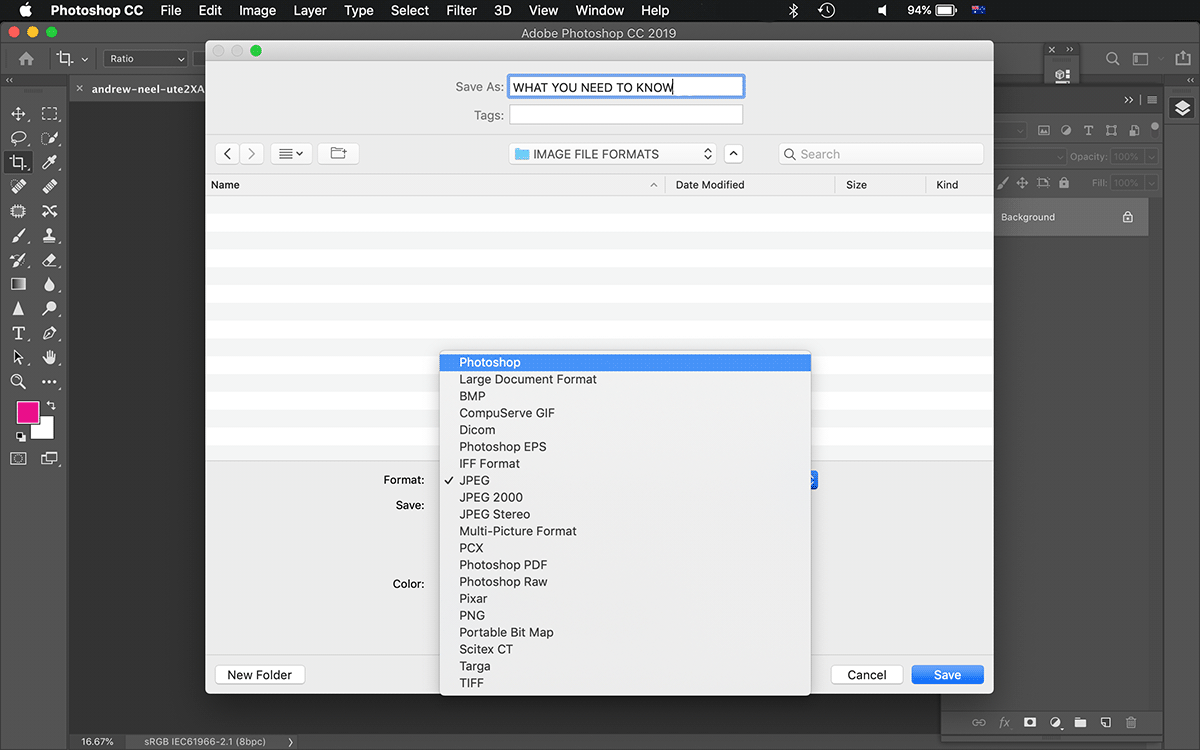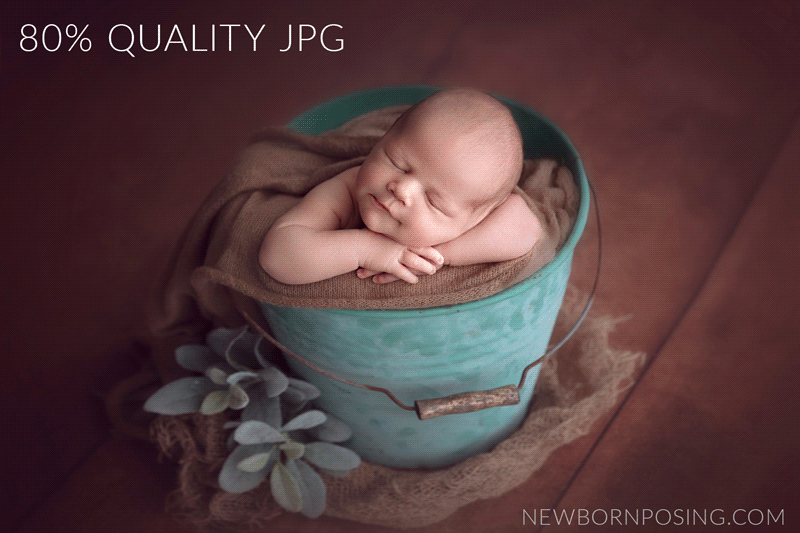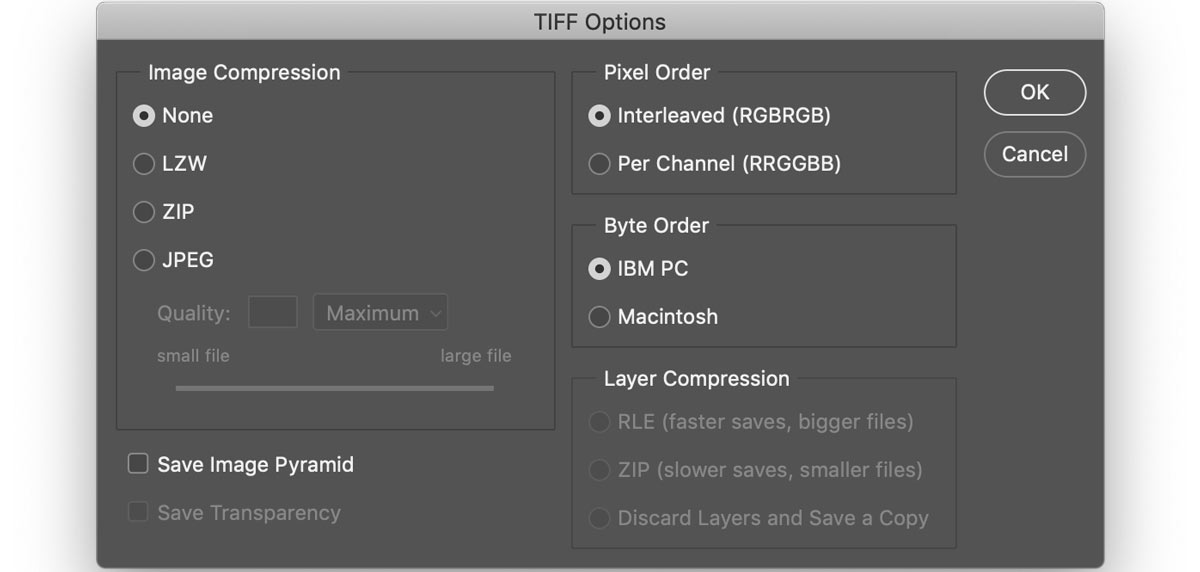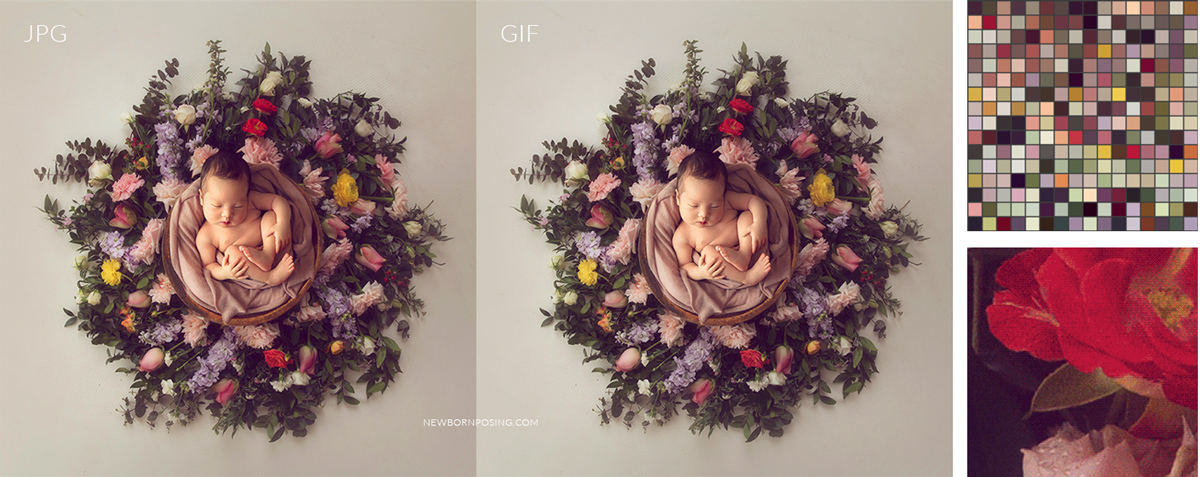The topic of image file formats can be quite overwhelming whether you are new to digital imaging or not. In this article, we’ll break down some of the file characteristics to help you determine which image file type is best suited to your needs.
Your needs will vary at different stages of your workflow – through capture, backup, editing, printing, client delivery, social media, archive and so on. So it’s important to have an understanding of how file formats differ.
Note, many different image file types exist. We’re covering some of the most commonly used.

FILE CHARACTERISTICS
COMPRESSION
Some file types compress image data in order to make the file size smaller. This makes both storage and sharing electronically more practical. The compression may be either lossy or lossless.
“Lossless techniques compress the file without removing image detail or color information; lossy techniques remove detail.”
Adobe
When a file which has been saved with lossless compression is opened back into Photoshop, the data becomes uncompressed and no detail has been lost. Think of it as similar to uncompressing a zip file of documents. When a compressed file is opened back into Photoshop, quality loss may be evident and cannot be recovered.
Photoshop’s default (.PSD) file is an example of an uncompressed file type. No compression, either lossless or lossy, is applied. This typically results in a large file size so considerable storage is required by photographers and retouchers.
Why does compression matter?
File storage can be costly, and online sharing of files whether by email, upload or online backup, can be time-consuming. It’s important to understand the impact choosing either compressed or uncompressed formats may have on image quality, local storage, business expenses, client delivery time and so forth.
LOSSY vs LOSSLESS
File formats can be characterised as LOSSY or LOSSLESS. This refers to whether or not data is removed during the process of saving a file in a particular format.
A LOSSY file format removes data, and therefore loses image quality. In some cases, the loss is accumulative. Accumulative loss means each time you open, edit, re-save and close the same lossy format file, more information will be thrown away. The more information that’s thrown away the more degraded the image will appear.
JPG is a common example of a lossy file format. Whilst the format is lossy, a very high-quality JPG can still produce a good quality image, and we recommend experimenting for yourself to assess the quality at different compression amounts.
(Note, the process of simply opening and closing a JPG file without editing and re-saving over the same file does not cause quality loss)
A LOSSLESS file format does not lose any image data or quality when the file is saved, regardless of how many times that file is opened, edited and saved again. PSD and lossless (note .tif has options) TIFF formats are examples of lossless file formats.

BIT DEPTH
The topic of bit depth is a masterclass in itself! In short, the greater the bit depth an image is captured in, the more image data we have to work with. The more information we have, the greater potential there is for our images and finished prints.
We commonly talk about 16-bit (more information) and 8-bit (less information) files when working in Photoshop. Some file formats support both 16- and 8-bit (eg. PSD / TIFF) while others support 8-bit only (eg. JPG). It’s important to be aware of compatibility when deciding your workflow and output needs.
PHOTOSHOP FEATURE SUPPORT
Not all image file formats are able to take advantage of all of Photoshop’s editing features. For this reason, we recommend working in Photoshop’s default .PSD file format while editing.
COMMON IMAGE FILE TYPES
Make yourself familiar with these points of interest about these common file types. Are you using the best file formats in your current workflow processes?
JPG (Joint Photographic Experts Group)
- lossy*, compressed file format resulting in smaller file sizes
- practical for online upload or delivery via email
- maximum quality = minimal data loss and larger file size
- minimum quality = great data loss and smaller file size
- only supports 8 bits per channel (bit depth)
- flattened image only – does not save Photoshop layers
- does not support transparency
- well suited to continuous tone (eg. Photographic) images
- JPG compression may cause logos, text and graphic elements to appear “jaggy” on the edges
- *a lossless JPG file type exists but is not widely used / compatible at this stage

PNG (Portable Network Graphics)
- lossless compression
- compatible with many – but not all – web browsers
- supports image transparency
- well suited to logos, text and graphic elements
- creates a large file so not commonly used for continuous tone (eg. Photographic) images
- was developed as a replacement for the older GIF format
TIFF or TIF (Tagged-Image File Format)
- offers options of uncompressed, lossless compression and lossy compression
- NOTE: Photoshop can save a layered TIFF file but if opened in another application, or much older versions of Photoshop, the layers and other features may not be accessible
- supports 8, 16, or 32 bits per channel (bit depth)
- maximum file size is 4GB
- commonly requested by graphic designers for artwork

PSD (Photoshop Document format)
- default photoshop format
- supports all Photoshop features
- retains your image layers allowing you to continue working on them later
- typically the most practical format to save as in whilst editing due to layer support and lack of compression
- use as your inhouse working file; most clients will not be able to open PSDs
- supports 8, 16, or 32 bits per channel (bit depth)
- maximum file size is 2GB
- (.PSB Large Document Format will support files larger than 2GB but is less commonly used unless required)
GIF (Graphics Interchange Format)
- limited colour palette
- not ideal for continuous tone (eg photographic) images due to the colour palette limitation of 256 colours within each image; causes stippling and banding
- supports image transparency
- supports animation
- compatible with web browsers
- commonly used for transparent (prior to the introduction of PNG) and animated graphics

FILE FORMATS – PRACTICAL WORKFLOW SCENARIO
The following notes a very simplistic example of a portrait photographer’s workflow in relation to appropriate image file formats. This article doesn’t not cover full file management and backup workflow.
1) Capture Camera RAW files to maximise the information which can be recorded by the camera.
2) During the editing process, save as .PSD files to take advantage of all of Photoshop’s editing features and bit depth options. PSD files will retain all layers should you need to return to editing in the future. Keep your layered PSDs until you are content that the edit is complete and image prints as desired.
3) Once finished editing and checking, save a lossless MASTER FILE. Your master file is your finished edit, in a high quality file format – ie. not lossy compression. We recommend a flattened (no layers) TIFF file for portrait photographers.
NOTE: TIFF is not always practical for high volume jobs (weddings/events), due to the larger file sizes. In this case, it’s common to save MASTER FILES as a high-quality JPG – with the exception of any of your hero shots which you may choose to keep as TIFF files for 16-bit printing, etc.
4) DOMESTIC CLIENT FILES, if offered, are generally best supplied in JPG format. JPGs are a highly compatible image format, able to be read and viewed on most computers and mobile devices. Note, commercial clients may request other file formats.
Client Print Files
It’s your choice what size (dimensions) you sell your images to your clients, and we’re not here to debate that. Resize (if desired) a copy of the files to the agreed size, saving as a JPG file. We recommend 80% or higher quality for clients. This will produce a file of practical size for clients to open, print and store. Remember, you will keep your best quality master file if they have any concerns in the future.
Client (and your) Social Media Files
We recommend resizing to 2048px on the longest size to suit social media platforms (as at 2019). You may wish to add your brand’s watermark. Save as a JPG. For web, you could drop the quality to 50-70%. We recommend doing some tests to assess your preferences as all images will react differently depending on the image content, tonal range and palette.
5) PRINTING – Inhouse, we print fine art prints from our uncompressed TIFF master files, resized to suit our client’s orders. They contain all the image data we worked with during the edit, and no information has been lost with this format. But we know that’s not always practical when sending files to your lab.
When dealing with a print lab ASK YOUR LAB for their file format requirements. The majority of volume printers will request JPG files, often suggesting around 70% quality for ease of upload online. Fine Art and Canvas labs may request flattened (no layers) TIFF files rather than a compressed JPG. These are the trends we’ve found over the decades in Australia, but again, please check the needs of your own lab.
If you’ve made it this far, you can see this is an area which can be quite complex. So we hope this serves you with some of the basic information to help you make decisions about file formats as they relate to your workflow needs.
FURTHER READING
File formats in Adobe Photoshop
Image compression in Photoshop
What is Adobe Camera Raw? | Adobe Photoshop tutorials


Deb says
This is great – thank you. I do have one further question. After I have opened a raw file in Camera Raw, made any changes I want and then open in Photoshop, what settings do I choose? i.e. 16 bit? 300 ppi? or other values?
Michael Burton says
Great Article. I do almost all of the processes as described already, tho I must admit to not totally understanding and as I print myself in studio, I always use TIFF from PS, give clients Jpeg.
Isoldr says
Thank you for sharing this very useful article! It is indeed a topic very often overlooked and can save one a lot of trouble. Excellent overview which clarified another piece of the puzzle!